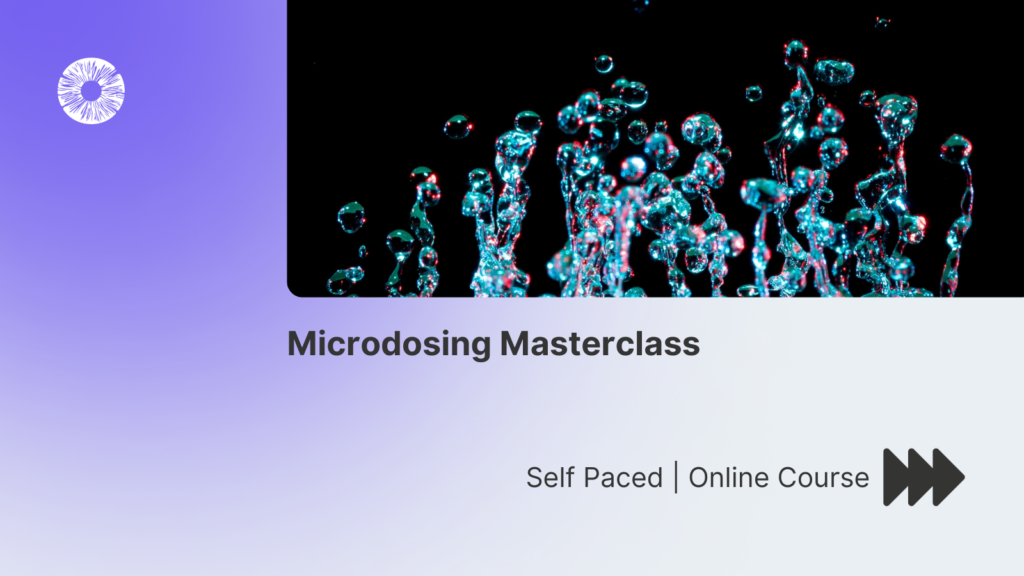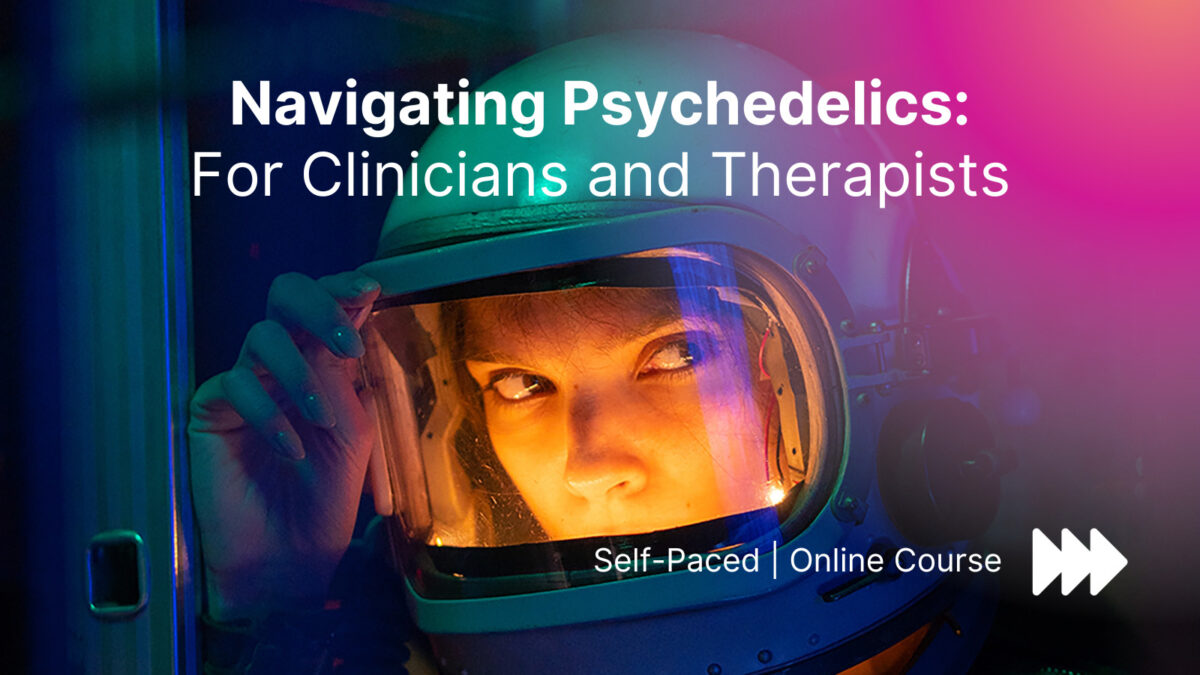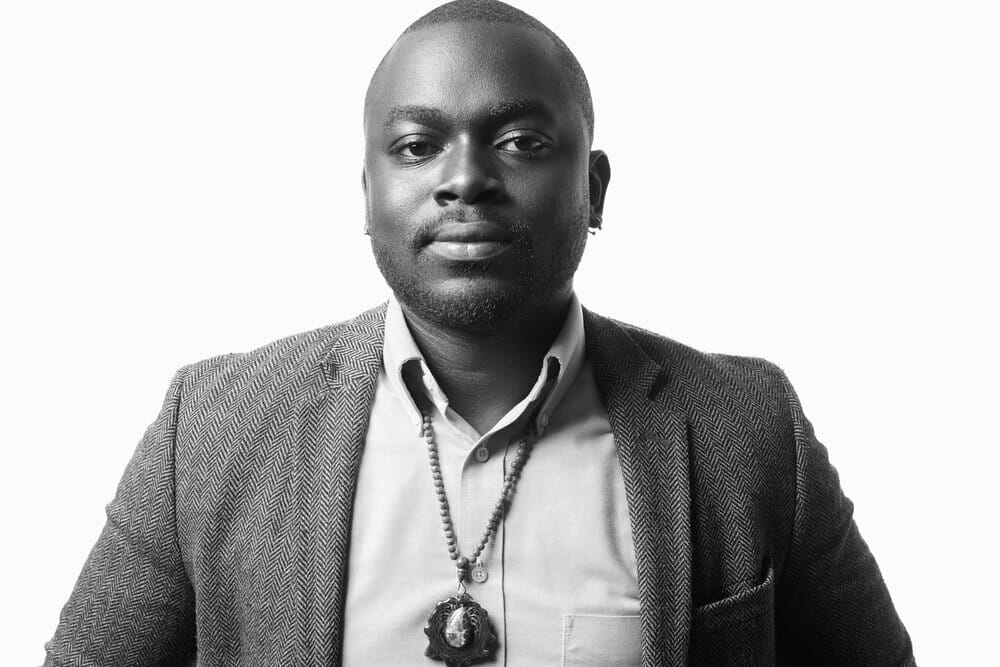As the psychedelic movement expands, with surmounting research serving to change the tide of public opinion, more people are seeking out psychedelics as modalities for healing and self-exploration. Whether in the context of psychedelic-assisted therapy, plant medicine ceremonies, or recreational use, the modern Western psychedelic discourse has long been interwoven with the concept of “set and setting.”
But in contemporary psychedelic culture, the term is no longer sufficient as a harm reduction mantra. How can it be updated to better serve today’s journeyers?
A Brief History of Set and Setting
“Set and setting” refer to many factors which extend beyond the psychoactive effects of a given substance, playing a vital role in shaping psychedelic experiences. Typically, “set” refers to the mindset of a psychedelic explorer and “setting” refers to the context in which a substance is taken.
However, there has been little development of which variables fall under the umbrella of set and setting since its conception in the 1960s. There are significant factors that shape a psychedelic experience – both acutely and in the long term – which aren’t fully captured by set and setting alone.
The concept of set and setting has become something of a harm reduction mantra interwoven with the emergent field of psychedelic-assisted therapy and psychedelic research at large, used to describe the ways in which factors that extend beyond the substance itself can impact and shape its effects. Accordingly, it’s been an impactful linguistic tool that therapists, researchers and explorers have looked to for guidance on curating a container for an experience with medicine.
“Set” commonly refers to an individual’s mindset, including both immediate and long-range states of mind. A person’s immediate set is related to their state of mind before a psychedelic session, including everything from intentions, fears, hopes, and expectations about the session. However, their long-range set might include enduring personality traits, personal history and formative life experiences, social identities, and mental health history.
“Setting” commonly refers to the container of the experience, which includes the physical and social environment within which a substance is ingested, factoring into account when and where it will take place. Thus, setting may include aspects such as music, whether it takes place outdoors or indoors, the decor/props in the session room, as well as the relationships between others present.
The concept of set and setting does not exist independently of culture, with the sociocultural context of set including, but not limited to, race, economic status, strength of relationships with others, and the individual’s access to and relationship with nature.
Timothy Leary, 1960s counterculture icon and ex-Harvard lecturer in clinical psychology, is generally given credit for popularizing the concept of set and setting through his emphasis on the importance of both in shaping psychedelic experiences.
In the cult classic, The Psychedelic Experience, Leary together with his colleagues Ralph Metzner and Richard Alpert reflected, “Of course, the drug dose does not produce the transcendent experience. It merely acts as a chemical key – it opens the mind, frees the nervous system of its ordinary patterns and structures. The nature of the experience depends almost entirely on set and setting.”
To a large extent, the notion of set and setting within Western culture has been shaped and inspired by the ways in which Indigenous cultures around the world ingest psychoactive plant medicines in contexts bound by ritual, ceremonial objects, music, relationship with the land, and cosmological interpretive frameworks.
Compared with Indigenous cultures, Western culture has a bias against the use of psychoactive substances, and despite evidence that the peoples of Europe once used psychoactive plants ritualistically, such traditions have been long forgotten. Cultural frameworks determine the lens through which psychedelic experience is interpreted, and the lack of a cultural context, beyond that of prohibition, within which to make sense of psychedelics in the global North has produced a need for the ongoing formulation of set and setting.
More recently, Ido Hartogsohn, assistant professor at the program for Science, Technology & Society at Bar-llan University, has been conducting research on set and setting, exploring the ways in which psychedelic experiences are shaped by society and culture. In 2017, Hartogsohn published a paper outlining the history of set and setting, pointing out that although the term is often credited to Leary, its roots extend further back.
He explains how members of the Club des Hashischins, translated as “Club of the Hashish Eaters,” a Parisian group dedicated to exploring psychoactive-induced experiences in the 1840s, gave emphasis to what he calls factors beyond the substance itself. When Timothy Leary began his research with psilocybin in 1960, he exchanged letters with English author Aldous Huxley, who shared an excerpt written by one of the club’s members, Théophile Gautier, in which Gautier explores the necessity of preparation and going into a hashish experience with a “tranquil frame of mind and body.”
In addition, Hartogsohn suggests that having a better understanding of set and setting could serve as a form of harm reduction as well as benefit enhancement, highlighting that “the discourse on set and setting had remained largely underdeveloped over the years.”
An Expanded Vision: Set, Setting, and Support
Considering the growing mainstream emergence of psychedelics, set and setting alone is no longer sufficient as a harm reduction mantra, nor is it sufficient as a guidepost for the benefit maximization of psychedelic therapy and research. We argue that as a matter of public health, this mantra must evolve into “set, setting and support.”
No doubt that the proliferation of positive results from clinical studies being conducted on psychedelics, alongside countless mainstream articles detailing their healing benefits with promising headlines like “The Psychedelic Revolution Is Coming. Psychiatry May Never Be the Same,” are driving increasing numbers of people experimenting with psychedelic substances.
Despite the undeniable healing benefits of psychedelics, media discourse around them is sometimes dressed in sensationalist language, serving to construct psychedelics as miracle cures for all mental health problems. This premise is misleading and does not highlight the innumerable challenges that present themselves around the psychedelic experience.
One evident challenge that may emerge, is that of the psychedelic experience itself. Even when set and setting are controlled, there is no guarantee that challenging content and situations will not present themselves.
“Sometimes active journeyers can find themselves in unsound decision-making states. Having the support of a peer, trip sitter, or facilitator, during an experience can help the explorer navigate their inner state and make adjustments to the setting for maximum comfort and safety,” says Hanifa Nayo Washington, co-founder and Chief of Strategy at Fireside Project, a psychedelic peer support line that provides free, live phone support to individuals actively tripping or looking to process past experiences.
As psychedelic researcher and transpersonal psychologist Stanislav Grof says, psychedelics can be “non-specific amplifiers of mental or psychic processes.” That is, they have the ability to amplify content which is latent in the psyche, bringing up thoughts, emotions, and sense impressions that we were previously unconscious of.
Another challenge that may emerge after the experience relates to the fact that healing is often a messy, non-linear process in which things sometimes get worse before they get better. Anecdotally, there appears a common point of contention around individuals’ expectations going into an experience versus the actual outcome. No doubt, having forms of support already integrated into the process can make such moments of difficulty easier.

Beyond this, the aftermath of a psychedelic experience can also be destabilizing, as the non-ordinary states of consciousness they elicit serve to catapult us beyond the bounds of our everyday perceptions. In part, it is this very disruption in our normative flow of consciousness that enables psychedelics to be so healing, however, it can also be a simultaneously scary process as we find the foundations of our worldviews and belief systems turned on their heads.
“Psychedelic experiences can invite tremendous dysregulation in the body, mind, and spirit system,” Washington says. “Enlisting post-journey support in the immediate days, weeks, and months that follow a psychedelic experience can significantly ease the process of self-regulating to a ‘new normal’.”
What Can You Do To Seek Support?
Seeking avenues of support is a way to enhance psychedelic preparation, journeys, and integration, with support taking many different forms. One type of support, which may seem more self-evident, is that of socially-based, community support at the interpersonal level.
Despite the fact that psychedelics can elicit feelings of connection and oneness, some who use psychedelics may find themselves feeling alienated and misunderstood. For years, prohibitionist, zero-tolerance policies served to demonize psychedelic substances and those who used them, resulting in a lingering stigma and sense of shame associated with their use. This is especially true for individuals from communities of color who have long faced the impact of the discriminatory enforcement of drug laws, with the war on drugs producing profoundly unequal outcomes across racial groups.
Additionally, spiritual and mystical-type experiences have long been ridiculed and pathologized in Western culture, as they often include elements that are not culturally accepted as objectively real, sometimes resulting in those who have profound transpersonal experiences being dismissed or labeled as “crazy.”
Following a deep spiritual or transpersonal experience in which an individual disconnects from their ego, once they begin folding back into themselves there are layers of their identity or their lives that they may leave behind. This letting go of behaviors and parts of the psyche that are no longer of service can be conceived of as a type of “psychedelic shedding.” Omar Thomas, Founder of Jamaica’s Diaspora Psychedelic Society, CEO of Jamaican Organics and Psychedelics Today Advisory Board member, first formulated the notion of “shedding” in the context of psychedelic integration.
This might relate to one’s job, relationship, identification with a certain religion, sexual identity, or even their gender. When one goes through this shedding process without adequate support, there’s the risk that rather than finding relief from their mental and psychospiritual afflictions, they deepen, due to the many associated implications and consequences of the shedding process.
For example, what happens when someone realizes that the reason for their stress is rooted in their work, but they can’t quit because they won’t be able to support their family otherwise? Or what happens when someone sheds a cis-gendered identity but they’re in a marriage that would fall apart, opening a flurry of difficult, albeit potentially necessary effects?
This shedding process isn’t necessarily a bad one, but it certainly can be without having adequate support present to facilitate and ease the process. Like a butterfly going through its metamorphosis, it needs to be held in a safe container while fragile to emerge on the other side as its fullest and most beautiful expression.
Even today, as psychedelics become increasingly accepted in the mainstream, there is still a residue of stigma that remains. Thus, it is important, when looking for someone to support your journey, to find a non-judgemental, trustworthy person to share the experiences with. For some, this person may materialize in the form of a therapist, counselor, coach, or shamanic guide, while for others it may be a trusted friend or family member.

If support in an individual’s immediate circle is scarce, finding community support could come from connection online or in person with a psychedelic community, many of which offer courses and integration circles. One benefit of finding community online is around connecting with people from a particular social identity group that may not be accessible otherwise. For example, there are now integration circles that cater to individuals who identify as BIPOC, neurodivergent, or queer.
“In preparation for a psychedelic journey, support can look like gathering with a trusted friend, psychedelic facilitator, or support circle, to explore intentions, apprehensions, impressions, and beyond,” Washington says. “This support can increase awareness of one’s inner weather or set. With greater awareness comes the possibility for increased understanding of one’s own needs and knowing.”
Other forms of support include tools and techniques that a psychedelic voyager can draw upon as resources for grounding before, during, and after psychedelic experiences.
No matter the quality of the experience, beyond an intention to reduce the risk of harm, certain practices can be adopted as a way of supporting oneself through moments of discomfort or difficulty, to add a deepened sense of meaning and lasting benefit to the experience. For example, a 2019 study that observed the effects of psychedelics on long-term meditators suggested that the effects of a mindfulness practice may help patients sustain treatment outcomes in the long-term.
One might consider adopting a type of embodiment practice, engaging different aspects of the body in creating deeper self-awareness, balance, and connection. Whether it be a practice rooted somatics or mindfulness, or a more dynamic movement-based practice like yoga or dance, finding ways to become embodied helps to cultivate a deeper relationship with oneself and inner support to fortify your whole being.
Exploring the value of somatic practice, Lauren Taus, therapist practicing Ketamine-assisted Psychotherapy and Founder of Inbodied Psychedelic-Assisted Therapy and Integration Training shares, “Every emotion has a somatic counterpart, a felt sense in the body, which means that developing a daily practice of being in your body and listening to somatic wisdom is essential for healing.”
Support can also manifest by tending to your connection with nature. It can be easy to feel isolated after the depth and intensity of a psychedelic experience, however, the earth and the manifold beings that permeate it can serve as a source of community, providing consistent support through the embodied, knowing you were never alone to begin with.
In our vernacular, we tend to say that we are using psychedelics, but it’s certainly possible that psychedelics are actually using us. When one considers the predictable shift in values developed out of their use, expanding them to the global scale, we can see that not only are psychedelics healing us at the individual level, but are collectively helping to change the course of humanity’s place on earth by allowing us to care more about ourselves, one another, and the earth itself.
As this continues, there will be a never-ending need to increase layers of support for the broader community. Where might you be able to add that missing piece in your community, in your work, or in your personal life? What does it mean for you to evolve beyond set and setting?



